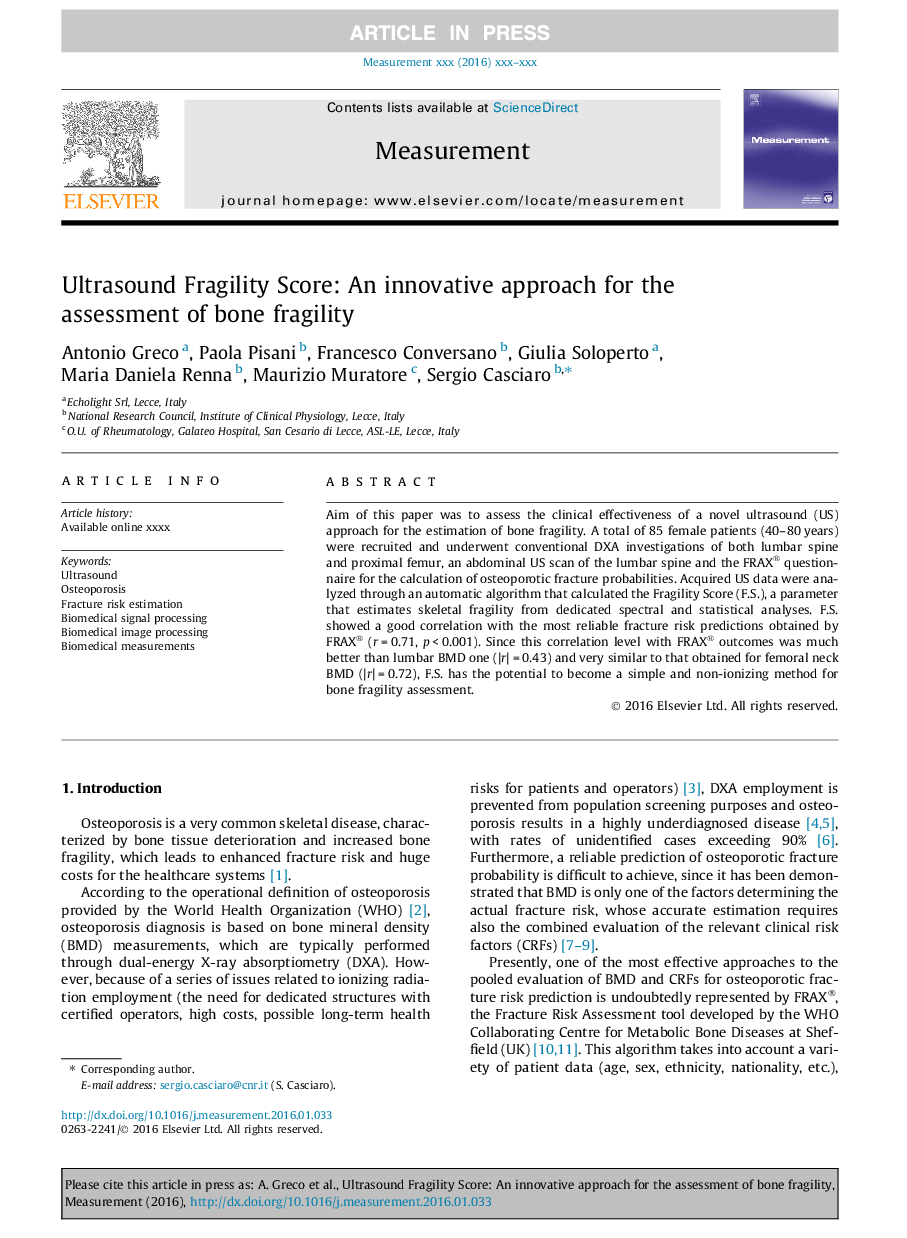| Article ID | Journal | Published Year | Pages | File Type |
|---|---|---|---|---|
| 5006732 | Measurement | 2017 | 9 Pages |
Abstract
Aim of this paper was to assess the clinical effectiveness of a novel ultrasound (US) approach for the estimation of bone fragility. A total of 85 female patients (40-80 years) were recruited and underwent conventional DXA investigations of both lumbar spine and proximal femur, an abdominal US scan of the lumbar spine and the FRAX® questionnaire for the calculation of osteoporotic fracture probabilities. Acquired US data were analyzed through an automatic algorithm that calculated the Fragility Score (F.S.), a parameter that estimates skeletal fragility from dedicated spectral and statistical analyses. F.S. showed a good correlation with the most reliable fracture risk predictions obtained by FRAX® (r = 0.71, p < 0.001). Since this correlation level with FRAX® outcomes was much better than lumbar BMD one (|r| = 0.43) and very similar to that obtained for femoral neck BMD (|r| = 0.72), F.S. has the potential to become a simple and non-ionizing method for bone fragility assessment.
Keywords
Related Topics
Physical Sciences and Engineering
Engineering
Control and Systems Engineering
Authors
Antonio Greco, Paola Pisani, Francesco Conversano, Giulia Soloperto, Maria Daniela Renna, Maurizio Muratore, Sergio Casciaro,
